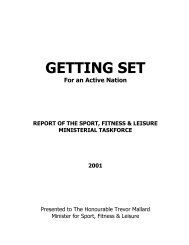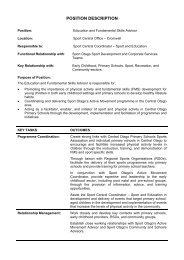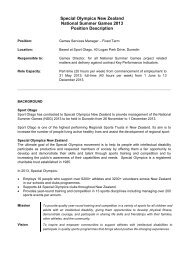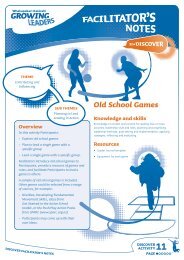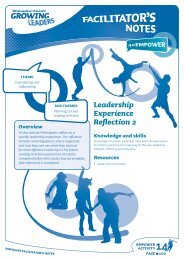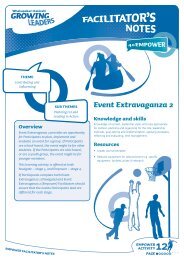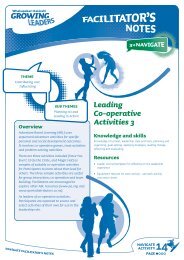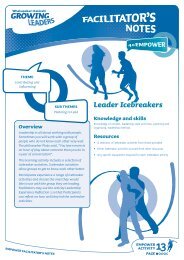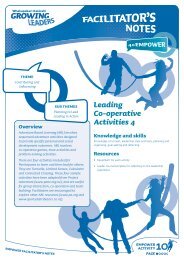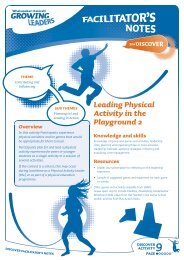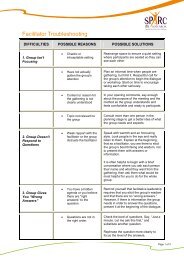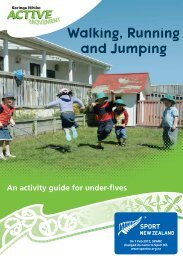Download Get Started (one document) - Sport New Zealand
Download Get Started (one document) - Sport New Zealand
Download Get Started (one document) - Sport New Zealand
You also want an ePaper? Increase the reach of your titles
YUMPU automatically turns print PDFs into web optimized ePapers that Google loves.
20<br />
GET STARTED – ACTIVE SCHOOLS<br />
Working in groups<br />
You can use active ways to organise children into<br />
groups in any curriculum area or even as an activity on<br />
its own e.g. as an activity break between subjects.<br />
Some grouping methods should be avoided, such as<br />
where team leaders pick group members alternately as<br />
this can be very stressful for the student who is picked<br />
last and not conducive to building self-esteem.<br />
Here are some suggestions:<br />
> Students hold hands in a circle. Drop hands and<br />
take a step out. Some<strong>one</strong> calls out a colour and<br />
all those wearing that colour jump into the middle<br />
and form a pair/group with some<strong>one</strong> opposite.<br />
Practise a few times to increase breathing.<br />
> Other variations, any of which could be in<br />
te reo, include:<br />
– calling out months/birthdays<br />
– calling out house numbers<br />
– numbering students around the circle (students<br />
with matching numbers work together)<br />
– giving students a letter of the alphabet (students<br />
with matching letters work together).<br />
> Ask students to find a partner and carry out a<br />
quick partner activity (such as mirroring, paired<br />
jumping or knee boxing); then join pairs so they<br />
form a group of four then six and so on.<br />
> <strong>Get</strong> students to decide how much physical<br />
activity they did yesterday and then to stand in a<br />
continuum line with those who did a lot at <strong>one</strong><br />
end and those that didn’t do so much at the other.<br />
Ask students to explain to the person standing<br />
next to them why they think they should be in that<br />
position. Then number students off (<strong>one</strong>, two)<br />
down the line so that all the <strong>one</strong>s form a team and<br />
all the twos form a team.<br />
Consider using different grouping methods to<br />
match needs. Be mindful of different abilities and<br />
experiences. Give instructions clearly and ensure that<br />
students do not move until all instructions are given.<br />
HOT!<br />
Take a look at Kotahitanga – <strong>Get</strong>ting on<br />
Together Years 1-3 in the Curriculum in Action<br />
series published by Learning Media.



